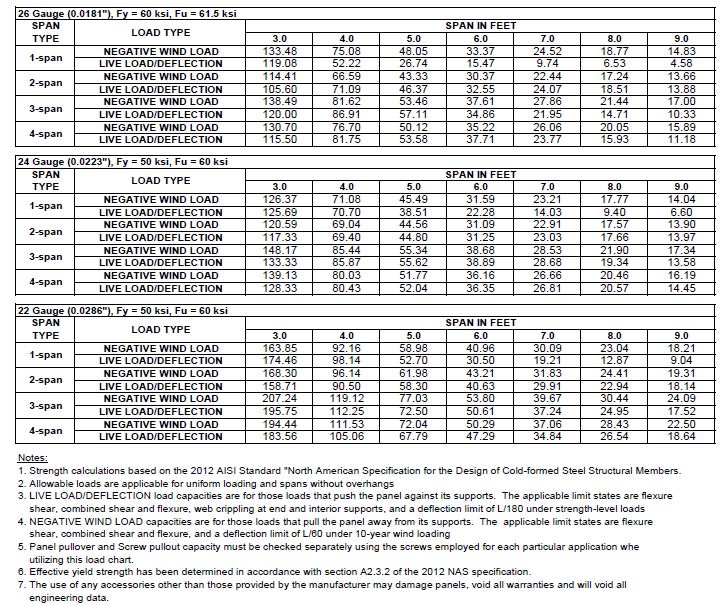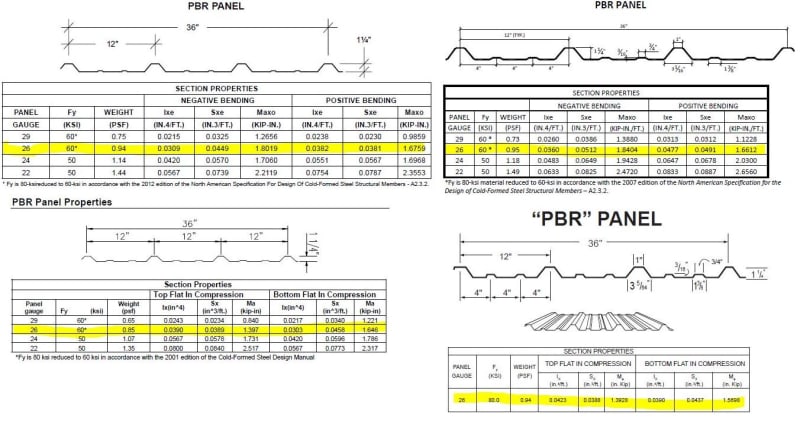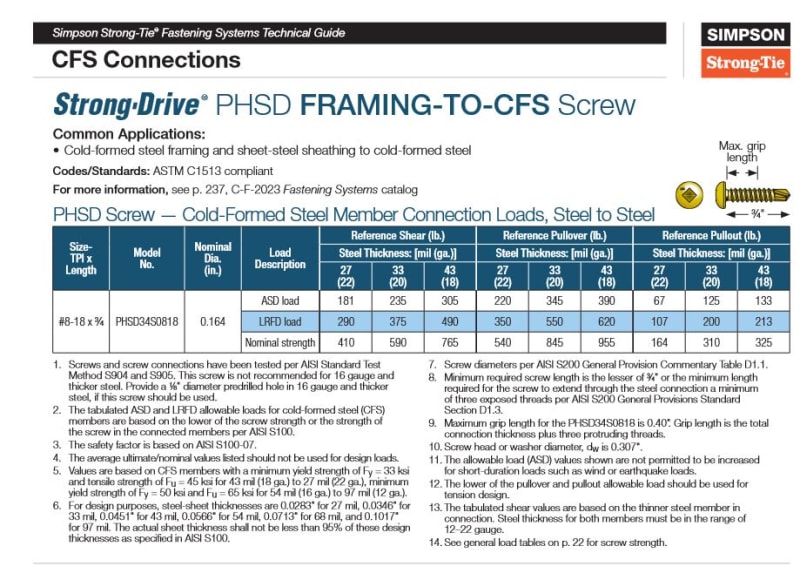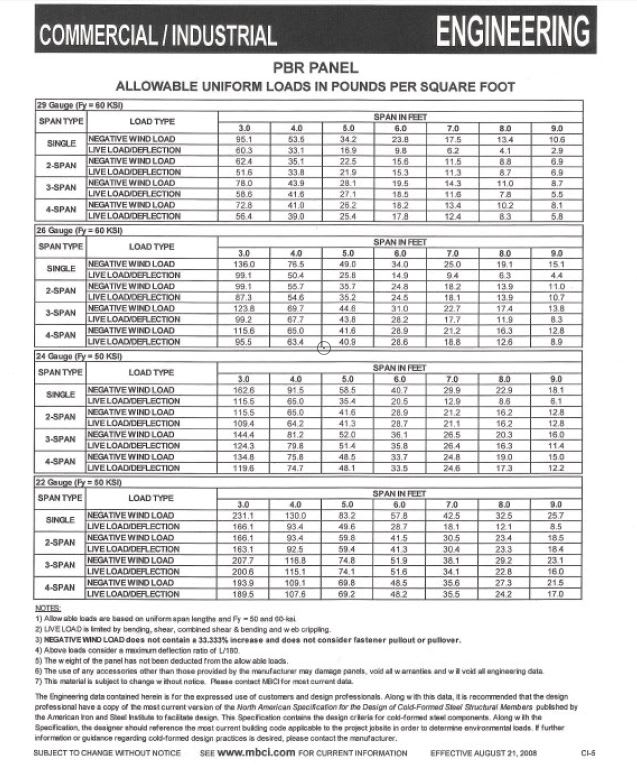kenshrox
Structural
- Mar 29, 2023
- 5
Hi all,
I am kind of new in the US standards, and I would like to get familiar with the sheeting for roof and walls, specially for warehouse cases.
Checking different manufacturers for PBR panel, i have noticed that having each of them the same geometry for the PBR panel, the section properties the net area and the net inertias are not the same, and sometimes not even close.
There are 2 questions that I would be interested in learn:
- The tables that the manufacturers provide is to enter with the "real" load, not the factored one, right? (I mean, for instance, for a wall would be the load of the wind using the ASCE 7, and for the roof, the add of the wind load + snow load + roof live load, but not combining with LRFD or ASD) Am i right?
- The second question, and more important to me. If I wanted to do these calculations analitically, I understand that I should be using the AISI S100, but I cannot find/understand well which are the parts of the code that I should apply. Do you know any place with the calculations explained for a case?
Thank you in advance!
I am kind of new in the US standards, and I would like to get familiar with the sheeting for roof and walls, specially for warehouse cases.
Checking different manufacturers for PBR panel, i have noticed that having each of them the same geometry for the PBR panel, the section properties the net area and the net inertias are not the same, and sometimes not even close.
There are 2 questions that I would be interested in learn:
- The tables that the manufacturers provide is to enter with the "real" load, not the factored one, right? (I mean, for instance, for a wall would be the load of the wind using the ASCE 7, and for the roof, the add of the wind load + snow load + roof live load, but not combining with LRFD or ASD) Am i right?
- The second question, and more important to me. If I wanted to do these calculations analitically, I understand that I should be using the AISI S100, but I cannot find/understand well which are the parts of the code that I should apply. Do you know any place with the calculations explained for a case?
Thank you in advance!




